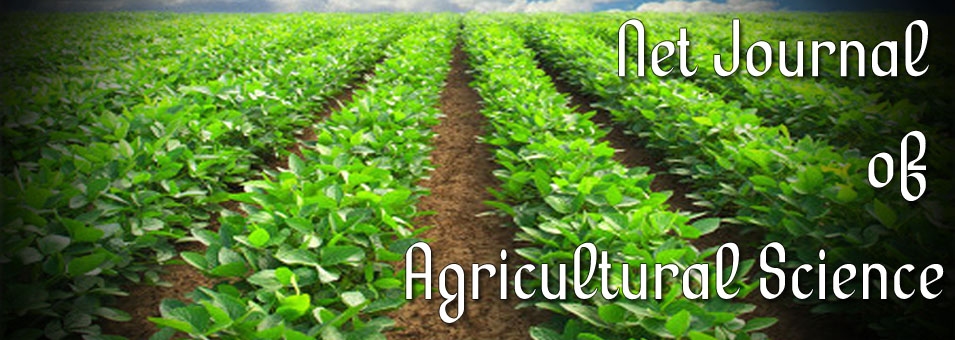Vegetative propagation of Peltophorum petrocarpum (DC.) Backer ex K.Heyne: A multipurpose tree
Mohammed Ahmed Ali Fadwa and Hamid Ali Elbasheer YahiaNet Journal of Agricultural Science
Published: October 16 2014
Volume 2, Issue 4
Pages 113-116
Abstract
This paper describes a successful protocol of vegetative propagation by using stem cuttings of mature Peltophorum petrocarpum plants. The experiment was conducted in the nursery of the Forestry Research Centre at Soba-Khartoum State, during November 2011 and April 2012. The socioeconomic importance of P. petrocarpum comes from its multipurpose uses such as; planting as ornamental and shade, for bee-keeping; and as fodder crop, and the wood for furniture. The bark is used as coloration agent and its extract is known to possess antibacterial and antifungal properties. There is also a believe that the extract is effective in curing dysentery, relieving ulcers, muscular pain and sprains; and can also be used as an eye lotion, gargle and even as tooth powder. Therefore, there is a demand in production of its seed for tree planting and domestication activities. Hence there is a need for efficient and economically feasible propagation method of P. pterocarpum. Therefore the objective of study is to develop a vegetative propagation protocol by using rooted stem cuttings; and to determine the effects of the rooting hormone indole-3-butyric acid (IBA) on rooting potentiality of stem cuttings of mature mother plants. The result revealed a significant effect (p < 0.001) of IBA concentrations on rooting percentage and growth performance of stem cuttings. The highest rooting percent was obtained with 200 ppm IBA which was not significantly different from 100 ppm, but significantly different from 50 and 0.0 ppm. The effect of IBA concentrations on root lengths and of roots per cutting was significantly different from 0.0 and 50 ppm treatments. Although 100ppm IBA gave the tallest root (4.6 cm) but it was not significantly different from 200 ppm (4.3 cm). Survival of rooted cuttings after transplanting from the propagator was 100 and 97% with 100 and 200 mg IBA respectively. Accordingly the conclusion reached is that rooted cuttings can be used successfully for obtaining healthy, uniform plantations of P. petrocarpum for large-scale, biomass production and tree planting programmes.
Keywords: Vegetative propagation, rooted stem cuttings, rooting hormones.
Full Text PDF
